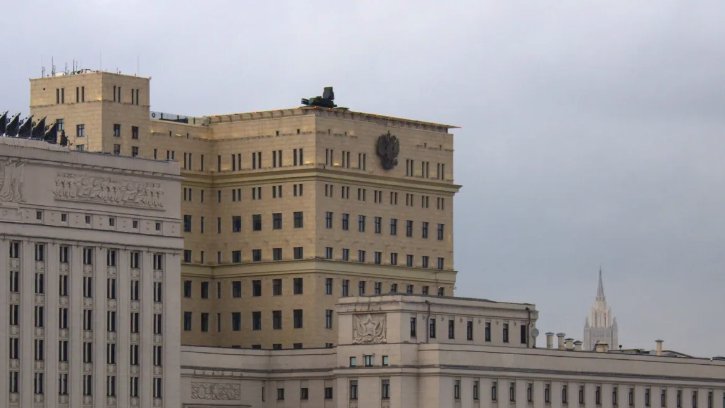Russia’s territory suffered the most intensive Ukrainian drone attack on 27 and 28 February since the start of the war. Ukraine’s UAVs hit a petroleum depot in Tuapse, crashed in the Belgorod region, and reached Adygea (a Russian region in the North Caucasus). It is suggested that the drones forced Russia to close the airspace over St. Petersburg. Moreover, another Ukrainian drone crashed 100 km away from Moscow, and explosions were reported near an airfield in Yeysk late at night on 28 February. Novaya Gazeta Europe and experts have tried to find out how these attacks were executed and what this operation by the Ukrainian army tells us about the state of the Russian air defence.
Russia’s territory has been attacked by drones and projectiles over 350 times as of February 2023. More than 160 people were killed or injured, according to the calculations by Novaya-Europe’s data team. Among the most dangerous attacks for the Kremlin are the ones that damaged aircraft at the strategic aviation airfield in Engels (about 730 km from Moscow) and the explosion at the Ryazan airfield (about 200 km from Moscow) in December, as well as the explosion of a drone over Kaluga (160 km from Moscow) in early February.
Ukrainian UAVs fly even closer to locations of key importance for the Russian leadership these days and often remain undetected by the air defence. For instance, in the early hours of 28 February, two explosions rattled, as reported by Astra, a Rosneft petroleum storage depot in Tuapse, 30 metres away from military barracks. Russia’s Emergency Ministry confirmed that the UAVs were spotted in Tuapse. Two craters 1.5 metres deep were found at the crash site later. Baza, a Telegram channel, says the drones damaged a boiler building near the depot. The explosion site is located about 70 km away from Vladimir Putin’s Bocharov Ruchey residence on the Black Sea coast.
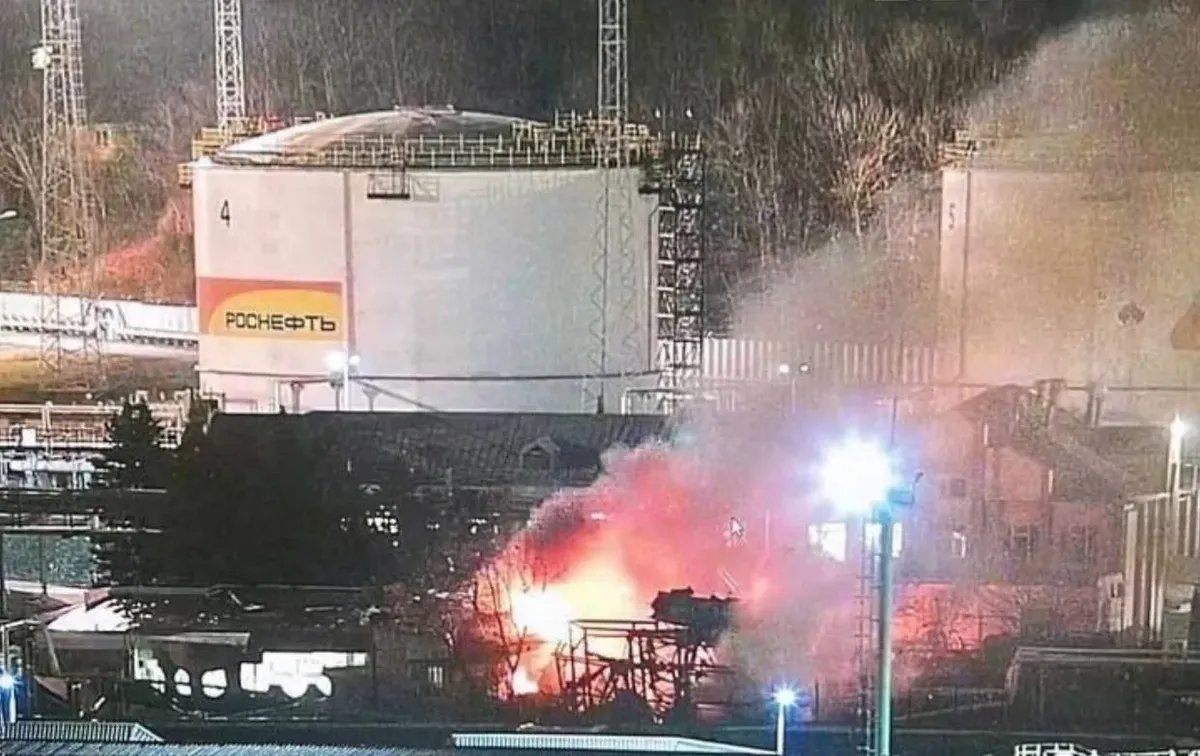
The explosion in Tuapse. Photo: social media
Pro-war Z-channels on Telegram posted photos of the drone debris, allegedly taken in Tuapse. There is writing clearly visible on the debris, showing that the UAV in question was Aerostar, a tactical drone produced by Israeli manufacturer Aeronautics Defense Systems Ltd. Henry Schlottman, a US OSINT analyst, also identified the drone as an Israeli one, Agentstvo reports.
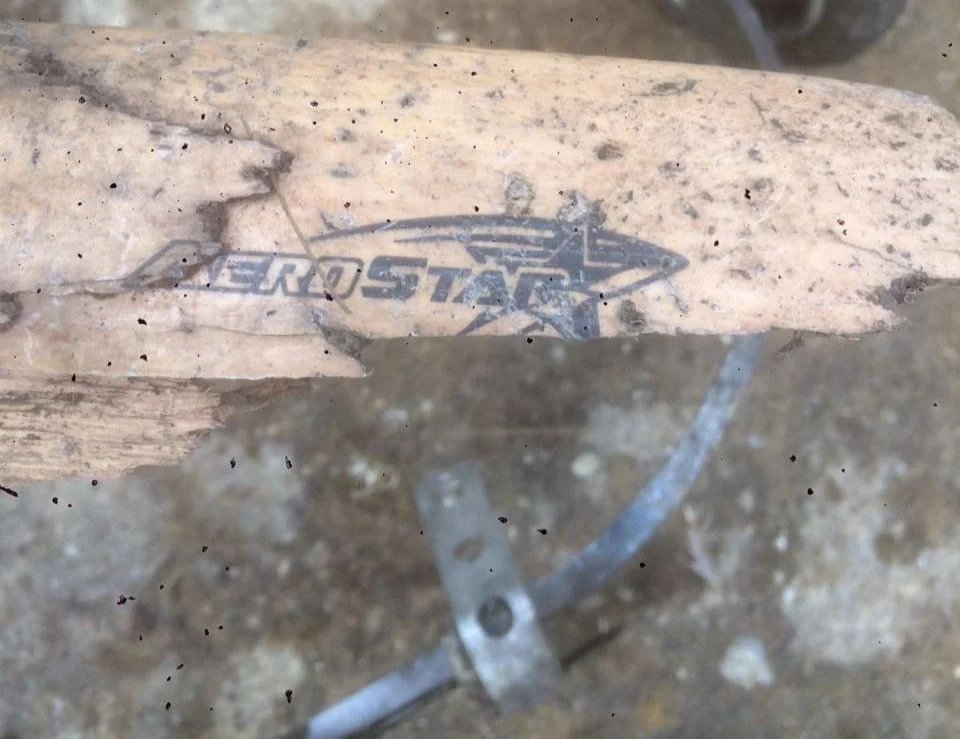
The alleged drone debris in Tuapse. Photo: Voenkory SVO-ZOV Telegram channel
This UAV is used for reconnaissance, and Ukraine had plans to start buying it off Israel, but the Israeli Foreign Ministry aborted the deal last year. Apart from Israel, several more countries have Aerostar drones, including the Netherlands, Poland, Georgia, and Azerbaijan.
“Aerostar has never been sold to Ukraine, and nothing of this kind has ever been revealed to public. If there is Aerostar debris there, then this is front-page news. It is an effective vehicle, but it is just that Ukraine is not supposed to have it,” David Sharp, an Israeli military analyst, said to Novaya-Europe.
Henry Schlottman, a US army vet and an OSINT analyst, told Novaya-Europe that he is doubtful that Ukraine had received the Aerostar drone directly from Israel. It is much more likely that the UAVs came from a NATO country that has these drones in service and is supplying them to Ukraine, he says. However, none of Ukraine’s allies have officially announced the supply of such drones.
The furthest such a UAV can fly is only 200km. A pro-Kremlin Telegram channel claims that some drones took off from the Russian territory, and seven drones were launched from the Azerbaijani section of the Caspian Sea.
Each of these attacks, except for the one on Tuapse, could have been launched from the territory controlled by Ukraine, Schlottman points out. He adds that the fuel endurance of a non-modified Aerostar drone is about 250 km — which means we can assume that it was the one launched from an unexpected location.
On the same night, drones crashed in Russia’s regions of Krasnodar and Adygea, and this was confirmed by Russia’s Defence Ministry. The next night, explosions rocked the area near a military airfield in Yeysk: pro-Kremlin channels say it was another drone attack, while the local authorities claim the entire thing was part of training exercises.
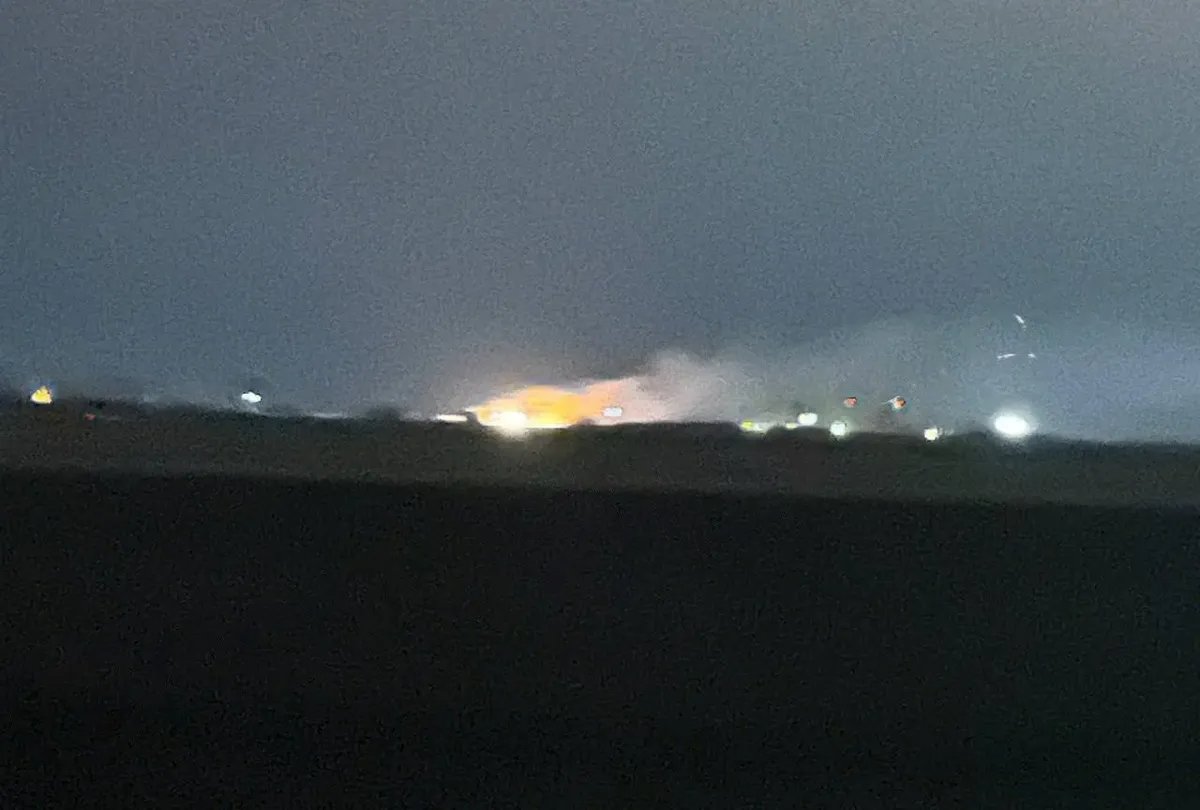
The fire near the airfield in Yeysk. Photo: social media
An Ukrjet UJ-22 Airborne combat drone crashed near Gazprom’s Voskresensk booster station in the locality of Gubastovo, Moscow region, on the morning of 28 February. Shot believes the UAV was not taken down, but rather it lost altitude and hit the trees. It is unknown whether the Gazprom facility was its target. A closed military town called Lukhovitsy-3 is located nearby, which serves as a radio centre for the leadership of Russia’s armed forces.
Schlottman believes that launching a drone in the direction of the Moscow region is more of an intimidation act: Ukraine’s military strikes are unlikely to cause significant damage to the Russian war engine, but they will clearly demonstrate that Ukraine can still attack Russia’s energy and military infrastructure in the rear, in particular, a facility in Lukhovitsy.
The UJ-22 drone is a relatively new development that Ukrjet introduced shortly before the start of the war, in September 2021. It is capable of carrying photographic equipment and upgraded 82mm mines to destroy armoured vehicles and personnel. This UAV has the potential speed of 200km/h and can fly as far as 800 km. David Sharp calls the Ukrjet drone an “improved version of the Shahed”, the Iranian Shahed-136 kamikaze UAV Russia uses under the name of “Geran-2” to attack Ukrainian cities.
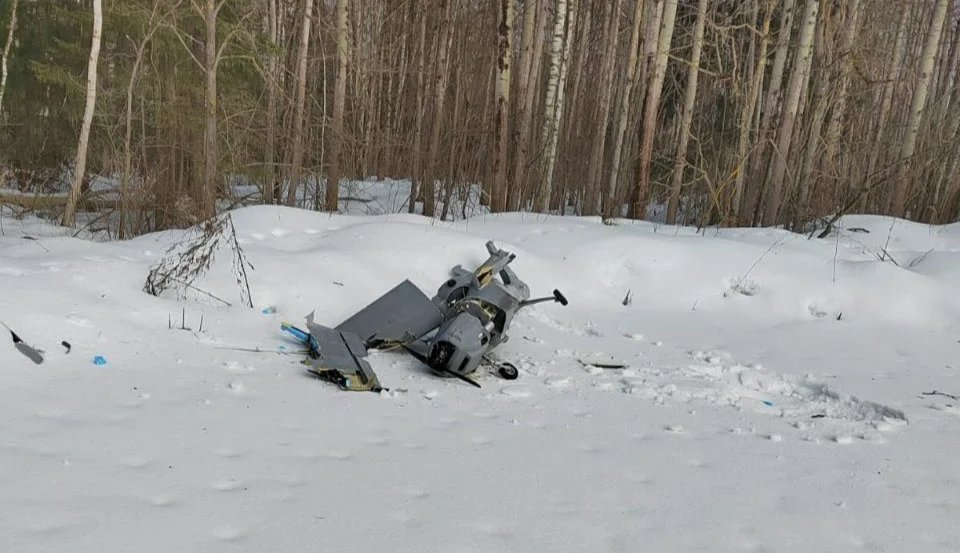
The Ukrjet drone that crashed near Moscow. Photo: social media
“This vehicle has an operating range of 800 km, and it can fly further in one direction if it is not supposed to come back. It has 20 kg of payload, but if it is used as a kamikaze drone, then it has no cargo, has its design changed, and a warhead inserted inside. Certainly, hardly all targets can be hit with this one, but it might go well against some poorly protected ones. Actually, this is the kind of stuff it is useful for: it can distract Russia’s air defence to fuel concerns among the Russian military leadership,” Sharp says as he describes the capabilities of the Ukrainian UAV.
The sky was completely closed over St. Petersburg and the surrounding area on the morning of 28 February for several hours, as the media reported, due to an unidentified flying object. Fighter jets took off, heard by locals, and an emergency plan used in case of illegal border crossings was declared.
Shortly before that, an air raid alert was transmitted on the radio and TV in several Russian cities, including St. Petersburg and Moscow. The Emergency Ministry later blamed hackers for this.
Fontanka reported that Russia’s Defence Ministry had informed the Pulkovo airport in St. Petersburg of a UFO 160-200 km from the city. It took two hours for the agency to announce that what happened was “an air defence exercise”.
“The Defence Ministry may be lying, this is more than possible,” Sharp says.
“Ukraine has vehicles that can fly 1,000 kilometres from the border to St. Petersburg with an explosive charge, or simply “spam” the airspace without any explosives, agitating its enemy. And you cannot rule out its attempts to reach St. Petersburg in the future, we need to realise that this is going to happen sooner or later.”
Sharp believes that such targets should be detected in advance in large urban centres, but the reality shows Russia’s air defence is not capable of that. The Ukrainian military industry is indeed working on the mass production of its own UAVs these days. For instance, since 2020, the Luch lab has been developing a Sokil-300 combat drone with a maximum operating range of up to 3,300 km (two-way trip), a control radius of 150-300 km, and a payload of 300 kg. It is unknown when it is going to be ready: one such model may cost over $1.25 million, and Russia’s missile strikes make its production even more complicated.
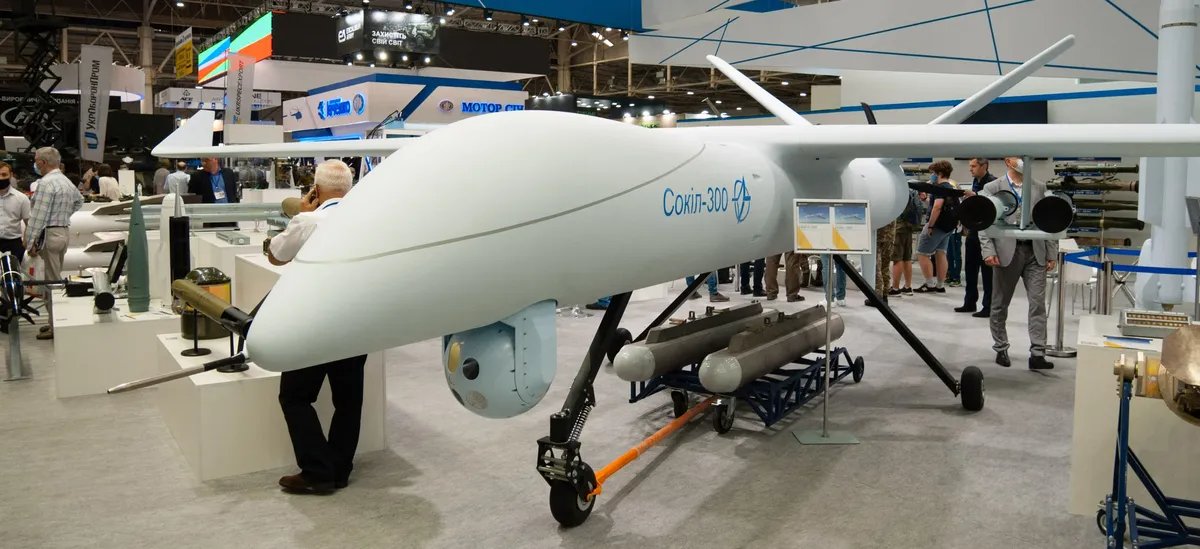
A model of a Sokil drone. Photo: Creative Commons
“It is most likely that we shall learn more about those drones as they will be used more frequently. We cannot learn much about this weapon before it has been used massively, but it is capable of bringing [a warhead] over a distance as long as this [to St. Petersburg or Moscow], and this isn’t as unrealistic as a strike on Novosibirsk, for instance,” the expert continues.
After Ukrainian drones reached Russia’s economic centres, Pantsir-S1 air defence systems appeared in Putin’s Novgorod residence, as well as the Moscow region and downtown Moscow, although such measures will hardly help Russia’s armed forces close its air defence breaches: Russia shares an enormously long border with Ukraine, and pulling air defence systems from the combat zones back to large cities would harm Russia’s potential on the frontlines.
“Russia has an advantage over Ukraine as it possesses long-range weapons capable of hitting targets deep into its opponent’s territory every now and then. Ukraine’s possibilities of this kind have been very limited since the start of the war. The Ukrainian military industry cannot fully bridge this margin during the war. However, creating opportunities to hit targets deep into Russia proper would be an ace up the sleeve for Ukraine’s army, considering both economic and military targets.
This would force Russia to focus its efforts on protecting its rear, pull air defence systems from the frontlines and place those near the key facilities in Russia proper,”
David Sharp says. Kyiv might also be pursuing purely psychological and media-oriented goals with its acts, the analyst believes. “To bring the war into Russia’s homes, and make people feel that the special military operation is a double-edged sword,” he adds.
“The recent attack was the first massive one focusing on a wide range of targets, at various distances from the border and located far from one another. A moderately small drone, like the one that crashed near Kolomna [Moscow region], is very difficult to detect if it flies low. There are many dead zones to find on the long border between Russia and Ukraine that small vehicles can easily penetrate, as they are made of plastic or composite materials. Those are not easily detected by radars. The trend is that the longer the war lasts, the more efforts will Ukrainians put into creating vehicles capable of penetrating deep into the Russian territory,” Sharp believes.
He says that if Ukraine’s military receives or produces enough lightweight composite ammunition capable of hitting targets deep in the Russian rear, Russia may begin to be wary of actively targeting Ukrainian civilian infrastructure.
At the same time, it is almost impossible to defend against drones using traditional air defence systems in large cities, as proved by the Shahed attacks on Kyiv, Dnipro, and other Ukrainian cities. For this purpose, Kyiv buys the so-called “Shahed catchers”, American autonomous counter-drones Fortem Dronehunter F700 with artificial intelligence. Those are capable of intercepting and landing hostile UAVs at high speed. Ukraine also equips mobile groups of fighters with portable anti-aircraft missile systems and small calibre weapons.
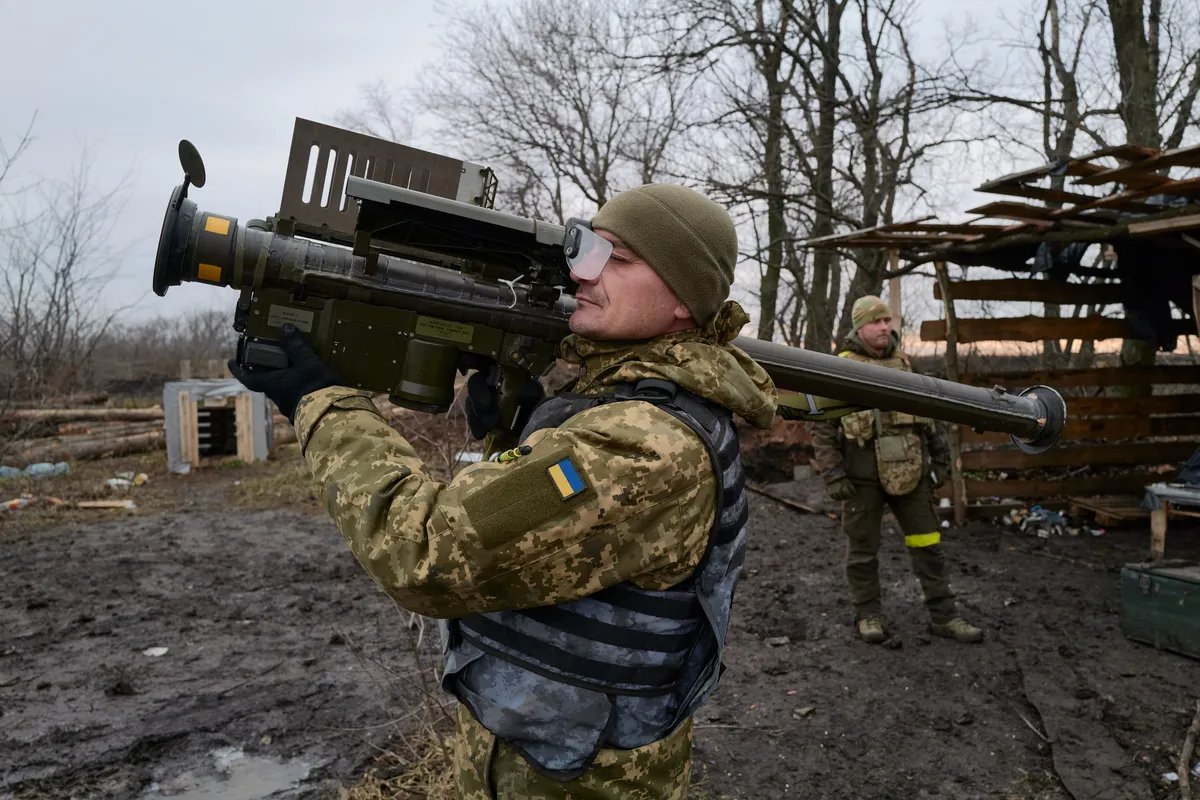
A Ukrainian serviceman using a shoulder-fired SAM to take down drones. Bakhmut, Donetsk region, December 2022. Photo: Pierre Crom/Getty Images
“Of course, Russia can also follow this path,” Sharp says. “We must not forget that a drone can be set such a route that it would bypass detection zones. Ukraine is using cheap devices as it is very difficult to take down a vehicle flying at 140 km/h, 50-100 metres above the ground. However, it can be taken down using an anti-aircraft machine gun. Setting up a hunt like this is also a challenging task as it requires personnel and material resources. It also requires calculating the UAV’s trajectory: if the gunman is some 500 meters away from where he has to be, he’s never going to hit the target.
Using primitive methods against primitive, yet modern weapons is an adequate path to follow. I believe Russia will improve such methods of combatting drones.
In Moscow, there is air defence and missile defence, which is enough for many things. But Moscow is a huge city, and targets flying low are a problem even for the well-organised air defence, as they still explode at a low altitude. And these air defence systems might also be triggered improperly.”
The expert is certain that Moscow will encounter the same air defence issues as Kyiv, including the psychological effect of the enemy’s actions: UAVs that penetrate into the city create a panic even if taken down. There is air raid alert, and people hear explosions instead of sleeping.
Henry Schlottman believes that Moscow will be using the traditional Pantsir air defence systems.
Most of the drones are not that fast, the problem is how to track those, the expert says. He adds that the 30-millimetre anti-aircraft guns that Pantsir has in addition to missiles have already proven useful in Syria, where they were used to repel drone attacks on the Russia-controlled Hmeimim Air Base.
In addition, the Russian Air Force has about nine A-50 early warning aircraft. Schlottman believes that those may be used for protecting cities from drone attacks, too.
On 26 February, a day before the UAV strikes on Russian territory, Belarusian partisans claimed that one of such aircraft had been blown up at the Machulishchi airfield near Minsk. Vyasna, a human rights group, reports that the Belarusian security has already detained six people suspected of plotting the incident. Telegram channel NEXTA says that the security is also looking for a native of Crimea, suspected of committing an “extremely serious crime” near the airfield.
However, the latest satellite imagery published by Maxar on 28 February shows the Russian A-50 jet at the Belarusian airfield visibly intact.
Despite the methods of using air defence to combat drones being far from perfect, the American analyst believes Ukraine will be seeking to avoid civilian victims, as if there are any, the support for the war may rise in Russia.
However, if the situation goes this far, in general terms, Russia is more likely to focus on defending its critical military infrastructure rather than protecting civilians, the expert concludes.
***
So far, the only notable step that Russia has taken in air defence reform is the reassignment of military defence units. From now on, the military air defence that is supposed to provide cover for ground forces in hostilities has been reassigned from the army to the aerospace forces, that is, directly to General Sergey Surovikin who used to command Russia’s troops in Ukraine from October 2022 to January 2023.
David Sharp believes that the lack of coordination on the battlefield forced the Defence Ministry to make the change:
“They decided that one man should be in charge of the air defence. This is a bit of a surprise move, because Russia has always maintained a duality of ground and air forces in this regard. I do not think that all of this has anything to do with the threats from kamikaze drones in the deep rear. This move was triggered by the lack of cooperation on the frontlines. Perhaps this lack of cooperation caused friendly fire, but this issue cannot be solved by simply reassigning the units.”
Join us in rebuilding Novaya Gazeta Europe
The Russian government has banned independent media. We were forced to leave our country in order to keep doing our job, telling our readers about what is going on Russia, Ukraine and Europe.
We will continue fighting against warfare and dictatorship. We believe that freedom of speech is the most efficient antidote against tyranny. Support us financially to help us fight for peace and freedom.
By clicking the Support button, you agree to the processing of your personal data.
To cancel a regular donation, please write to [email protected]
